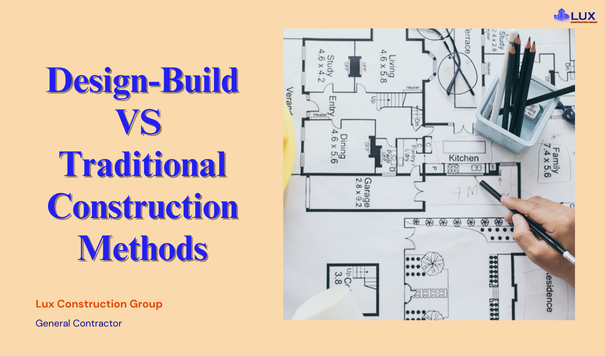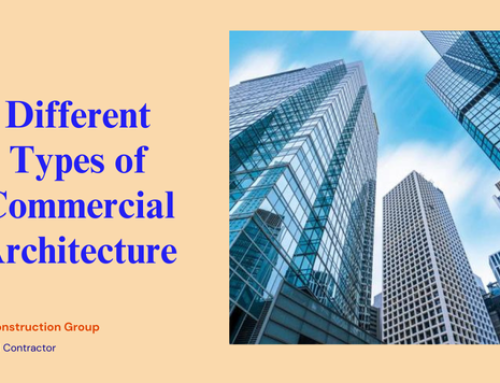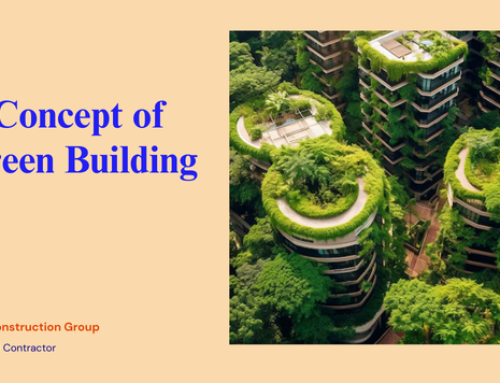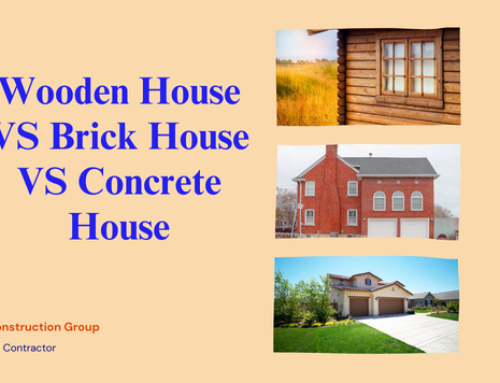Traditional project delivery methods often lead to miscommunication, blame-shifting, and increased stress for all parties involved.
This traditional model, known as design-bid-build, typically involves separate contracts for designers and contractors, creating a fragmented workflow that can result in inefficiencies and complications.Thankfully, there is a more streamlined alternative: the design-build delivery method. This approach integrates both design and construction services under a single contract, offering numerous advantages.
But what exactly are the advantages of design-build? How can this increasingly popular method alleviate stress while optimizing project goals, budgets, and timelines? Let’s find out!
Contents
- Design-Build Method VS. Traditional Project Delivery Method
- 12 Benefits of the Design-Build Method
- Enhance Communication and Collaboration
- Faster Project Completion
- Cost Savings
- Single Point of Responsibility
- Improve Quality Control
- Greater Innovation and Flexibility
- Enhance Risk Management
- Streamline Project Management
- Sustainable and Eco-Friendly Solutions
- Enhance Client Involvement
- Optimize Resource Utilization
- Long-Term Value
- Partner With LUX Construction Group For Your Next Project!
Design-Build Method VS. Traditional Project Delivery Method
Historically, most construction projects have been managed using the traditional project delivery method, also known as design-bid-build. This approach has a clear division between the design and construction phases, with separate contracts for designers and contractors. This separation often creates a fundamental gap between all parties involved. Designers and contractors operate independently, with the project owner acting as the intermediary to coordinate and manage each entity.
This siloed operation can lead to numerous challenges. When issues arise, it’s common for blame to be shifted between the design and construction teams, causing delays, budget overruns, and design compromises. The owner, caught in the middle, faces the daunting task of resolving conflicts and ensuring the project stays on track.
In contrast, the design-build method integrates all aspects of a construction project under a single contract. One entity is responsible for planning, designing, constructing, budgeting, and managing specialty trade contractors and sub-consultants. This unified approach fosters collaboration and ensures that all team members work together towards the same goal.
The benefits of the design-build method are substantial. The streamlined operations and enhanced communication lead to fewer disputes, faster project completion, and more effective budget control. For project owners, this means peace of mind, significant cost savings, and a smoother overall process. This collaborative approach makes the design-build method an attractive choice for modern construction projects, offering both efficiency and financial benefits.
12 Benefits of the Design-Build Method
The design-build method has emerged as a leading approach in project delivery, gaining popularity in recent years due to its numerous advantages.
But what sets design-build apart from other construction methodologies?
At its core, the design-build approach fosters a collaborative environment that addresses many of the challenges inherent in traditional methods. By consolidating planning and execution under a single entity, the design-build model ensures streamlined communication and accountability, enhancing overall project efficiency and effectiveness.
Let’s explore 12 key benefits of the design-build delivery method to help you understand why it might be the right choice for your next project.
Enhance Communication and Collaboration
Design-build construction fosters an environment where communication and collaboration are paramount. By having a single team responsible for both design and construction, all parties are aligned with the project’s goals from the outset. This alignment minimizes misunderstandings and ensures that everyone is working towards the same objectives.
The continuous interaction between designers and builders facilitates real-time problem-solving, enabling swift adjustments and innovations. This dynamic collaboration enhances the overall efficiency and quality of the project, as potential issues can be identified and addressed early on.
Faster Project Completion
A significant advantage of the design-build approach is the ability to accelerate project timelines. Unlike the traditional method, where design and construction phases are sequential, design-build allows for overlap between these phases. This concurrency means that construction can begin before the final design is complete, significantly shortening the overall project duration.
Early involvement of contractors in the design phase ensures that practical and buildable designs are developed, further speeding up the construction process. The integrated approach of design-build thus allows for quicker project delivery, which is especially beneficial in time-sensitive projects.
Cost Savings
Cost efficiency is a major benefit of design-build construction. With the design and construction teams working together from the beginning, cost estimates are more accurate and realistic. This early financial clarity helps in making informed decisions that keep the project within budget.
Additionally, the design-build model reduces the likelihood of costly change orders, which are common in traditional projects due to design and construction discrepancies. The integrated team can foresee potential issues and address them proactively, leading to significant cost savings.
Single Point of Responsibility
In the design-build approach, having a single point of responsibility simplifies project management. Clients deal with one entity for both design and construction, which streamlines communication and accountability. This single point of contact ensures that any issues or concerns are addressed promptly, reducing the risk of delays and miscommunications.
The unified responsibility also minimizes legal disputes, as there is a clear delineation of accountability. This aspect of design-build construction provides clients with peace of mind, knowing that one team is fully accountable for the project’s success.
Improve Quality Control
Quality control is a critical aspect of any construction project, and the design-build model significantly enhances it. With designers and builders working collaboratively, there is a continuous focus on quality from the project’s inception to completion. This partnership ensures that the design intent is preserved and executed with precision during construction.
Ongoing quality assessments throughout the project allow for immediate rectification of any issues, maintaining high standards of workmanship and material selection. The integrated approach of design-build thus results in superior project quality.
Greater Innovation and Flexibility
The collaborative nature of design-build construction encourages innovation and flexibility. The synergy between design and construction teams allows for creative solutions and innovative design ideas to emerge. This flexibility enables the team to make real-time adjustments and optimizations, leading to more functional and aesthetically pleasing outcomes.
Moreover, design-build construction can adapt to changes in scope or client preferences without causing significant delays or cost increases. This adaptability makes it an ideal choice for projects where requirements may evolve during the construction phase.
Enhance Risk Management
Effective risk management is crucial in construction, and the design-build approach excels in this area. With a single entity responsible for the entire project, risks are identified and mitigated more efficiently. This unified approach reduces the potential for conflicts and ensures that risks are managed collaboratively and proactively.
The early involvement of the construction team in the design phase also allows for better risk assessment and management strategies, ensuring a smoother project execution. This integrated risk management enhances the project’s overall stability and success.
Streamline Project Management
The design-build approach simplifies project management by providing a single point of contact for both design and construction. This streamlined management reduces administrative burdens and allows for more efficient resource utilization. Project managers can focus on overseeing the entire process, ensuring that timelines are met, budgets are adhered to, and quality standards are maintained.
This holistic oversight is instrumental in delivering successful projects, as it ensures that all aspects of the project are coordinated and executed seamlessly.
Sustainable and Eco-Friendly Solutions
Design-build construction is well-suited for incorporating sustainable and eco-friendly solutions. The integrated approach allows for the seamless inclusion of green building practices from the initial design through to construction. This holistic view ensures that sustainability goals are met without compromising on design or functionality.
Sustainable design features such as energy-efficient systems, sustainable materials, and waste reduction strategies can be effectively implemented. This commitment to sustainability results in projects that are environmentally responsible and economically efficient.
Enhance Client Involvement
Clients are more involved in the design-build process, providing input and feedback throughout the project. This increased involvement ensures that the final outcome aligns closely with the client’s vision and expectations. Clients can make informed decisions and adjustments as the project progresses, leading to greater satisfaction with the completed project.
The collaborative nature of design-build fosters a strong partnership between the client and the project team, ensuring that client needs are prioritized and met. This partnership enhances the overall success and satisfaction of the project.
Optimize Resource Utilization
Resource utilization is optimized in the design-build approach. The integrated team can plan and allocate resources more effectively, ensuring that materials, labor, and equipment are used efficiently. This optimization reduces waste, lowers costs, and ensures that the project progresses smoothly.
Effective resource management also means that the project team can respond quickly to any changes or challenges that arise, keeping the project on track. This efficient use of resources is a hallmark of the design-build approach, contributing to its overall effectiveness.
Long-Term Value
Design-build construction delivers long-term value. The focus on quality, efficiency, and collaboration ensures that the final product is not only completed on time and within budget but also built to last. This longevity translates to lower maintenance costs and higher returns on investment for clients.
The comprehensive planning and execution of design-build projects also mean that buildings are more likely to meet the evolving needs of their occupants over time. This future-proofing aspect of design-build construction ensures lasting value and client satisfaction.
Partner With LUX Construction Group For Your Next Project!
Design-build construction offers a myriad of benefits that make it an attractive option for many construction projects.
From enhanced communication and faster completion times to cost savings and improved quality control, the advantages are clear.
At LUX Construction Group, we leverage the design-build approach to deliver exceptional projects that meet and exceed our clients’ expectations.
Whether you are planning a new construction project or a major renovation, the design-build method can provide the efficiency, quality, and value you need.
Contact us today to discuss how our design-build approach can help you achieve your project goals efficiently and effectively.






